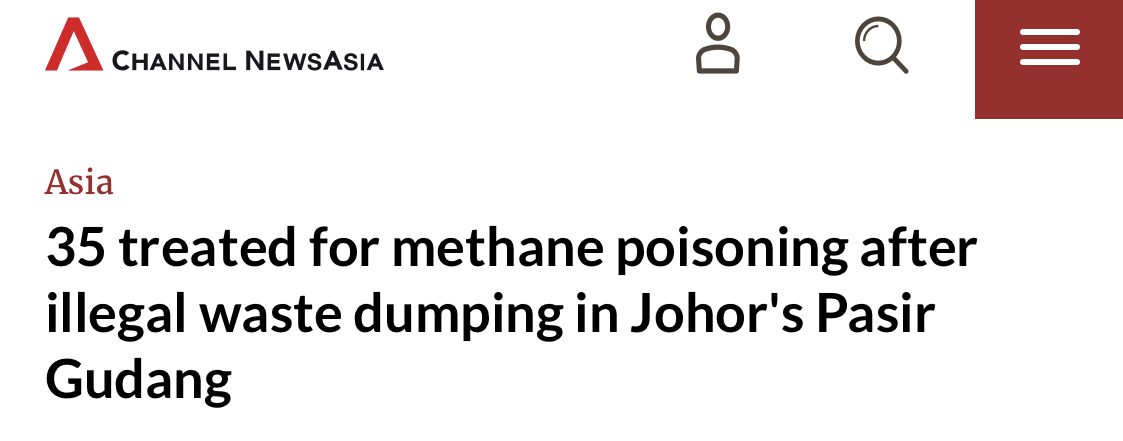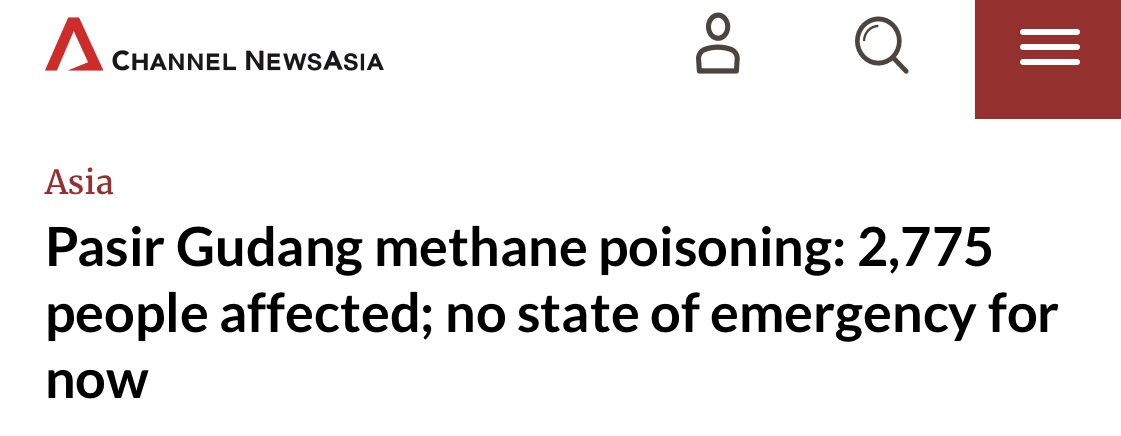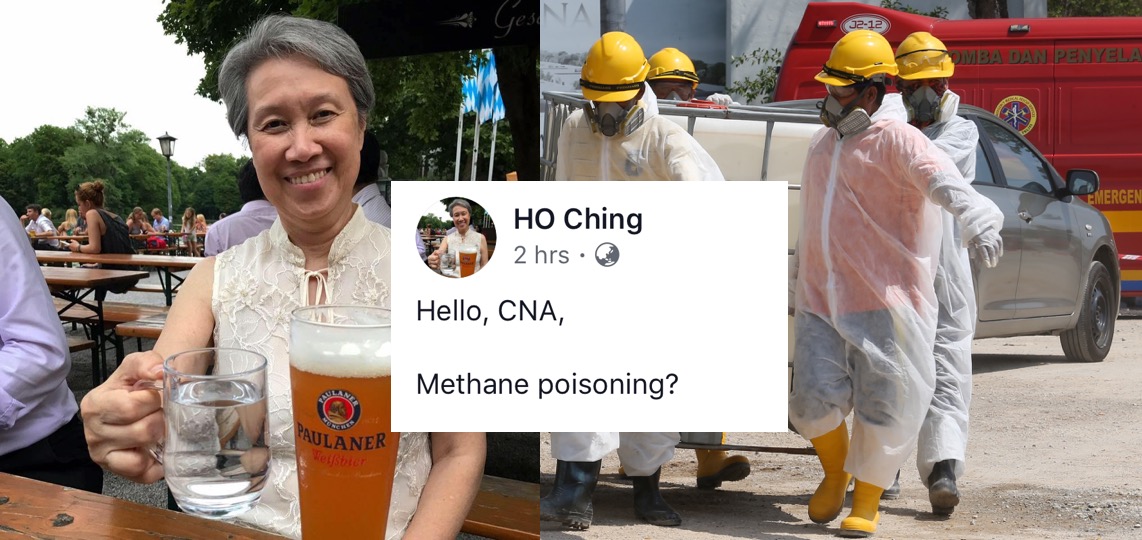Everyone knows at least two things about Ho Ching:
- She is Prime Minister Lee Hsien Loong's wife, and
- She is CEO of Temasek.
But here's a third equally important detail that matters especially in this story — she's a very accomplished electrical engineer, with a Master's from Stanford University to boot.
And it isn't only academics: she also played a big role in Singapore Technologies (and was also its CEO), as well as setting up and listing ST Engineering as its first chairman.
So as an electrical engineer, she might know a thing or two about energy-emitting gases.
And she seems to, based on a series of posts she wrote on Monday morning about the ongoing air pollution crisis in Pasir Gudang:
1. At 9:50am — where Ho debunks idea that people are getting poisoned by methane
Here, Ho questions a headline used by Channel NewsAsia (CNA) in its reports on the ongoing crisis in Pasir Gudang, which it has started referring to as the "Pasir Gudang methane poisoning" — as evidenced in multiple reports:
 Dated March 7, 2019, screenshot via CNA (click headline to go to article)
Dated March 7, 2019, screenshot via CNA (click headline to go to article)
 Dated March 14, 2019, screenshot via CNA article (click headline to go to article)
Dated March 14, 2019, screenshot via CNA article (click headline to go to article)
 Dated March 16, 2019, screenshot via CNA article (click headline to go to article)
Dated March 16, 2019, screenshot via CNA article (click headline to go to article)
Here's what she had to say about methane gas, in response:
In case you can't see it:"Hello, CNA,
Methane poisoning?
Methane is lighter than air, and rises and disperses quickly in open air.
Its main risks are in confined spaces where methane can be trapped, such as in a confined ship cargo space or in sewer tunnels.
It is highly flammable in low concentrations, so a fire or explosion can be set off easily.
At higher concentrations, it can displace oxygen in the lungs, and cause suffocation from lack of oxygen.
Methane is produced in the open grassland when cows and cattle fart, and over padi fields where we have rice grown in wet cultivation.
But these are not confined spaces, and so the methane rises and disperse quickly. Hence, we don’t hear of fires and explosions in cattle farms from the methane, nor about suffocation, much less “methane poisoning”, among rice farmers working in the padi fields."
2. At 9:59am: Where Ho follows up to substantiate her point
Nine minutes later, Ho turns to the Straits Times(ST), sharing an article on the completion of the stretch of river in Pasir Gudang:
She listed the chemicals that were found, and shared some additional information about some of them — perhaps the ones she knows about:"Benzene is poisonous.
Xylene is the heady compound sometimes found in permanent or white board markers - not good for use in confined spaces."
She then touched on methane again, noting specifically that it is "non-toxic":
"Methane is non-toxic. It is lighter than air, and rises and disperses very quickly in open air.
Its main risks are explosion and suffocation in confined spaces when methane is trapped and concentration increases. It is highly flammable and at moderate concentration, an explosion can be sparked off in confined spaces such as in ship cargo holds. At even higher concentration in confined spaces, suffocation occurs when methane in the air displaces oxygen in the lungs."
And finally,
3. At 10:11am: Ho's final salvo
Ho then shared yet another article by ST — one that detailed more information on a list of nine chemicals found in tests run on river samples in Pasir Gudang:
Which one might take as there being other possibilities of things that could have caused the symptoms and sickness suffered by the residents of Pasir Gudang.ST's reports on this have only said people have been hospitalised for "exposure to hazardous fumes", stopping short of saying precisely which gas it was that could have made them sick.
Top photo collage via Ho Ching's Facebook page, Muhammad Syukri / AFP / Getty Images
Content that keeps Mothership.sg going
???
Ditch everything and curl up in bed like these adorable Singaporean animals.
??️
Here's a constructive response to cyberbullying which doesn't involve arguing in Facebook comments.
??
These people willingly clean up other people's trash - here's why.
??
"Sexy singles in your area" or Game of Thrones? The choice is clear.
If you like what you read, follow us on Facebook, Instagram, Twitter and Telegram to get the latest updates.
